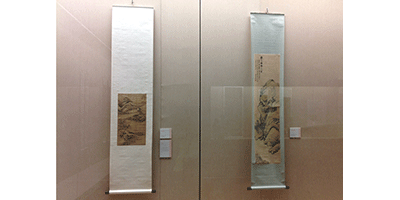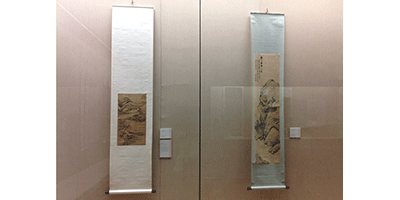Modern Recipe for Preserving Ancient Chinese Scrolls
As art conservators know, long-term storage of rolled up scrolls—such as ancient Chinese paintings and calligraphy—can cause the long edges of the paper to curl outwards, with potentially damaging effects. Ming-Han Chou and researchers at National Tsing Hua University in Taiwan, now have a theory for what causes this curling, known in Chinese as Qi Wa (起瓦). Their model, presented in Physical Review Letters, could help conservators find better ways to prepare and store the artworks, and it may be applicable to biological membranes or other flexible materials.
Chou et al. boil down the edge-curling problem to what is called the Poisson effect—the tendency of an elastic material compressed in one direction to expand in the perpendicular direction. In a rolled-up scroll, the scroll backing forms the outer layer and, to accommodate the bending, has to stretch—often irreversibly. To lay the scroll flat again, the outer (back) layer’s length must contract, causing the back side to expand along the width of the scroll and the long edges to curl up.
The researchers derived simple power-law equations that relate the height of the curled edges to the scroll’s bulk moduli along its length and width, its dimensions, and the radius of the scroll when it was rolled for storage. Chou et al. confirmed their model by rolling up differently sized sheets of copy paper and polyethylene terephthalate—the polymer found in plastic bottles and polyester—and measuring the resulting curling. To prevent curling, Chou et al. advise lining up the least elastic direction of the paper (the direction of the paper fibers) with the length of the scroll, and adopting the Japanese practice of using a stiff brush to perforate the scroll backing, which—like a meat tenderizer on steak—loosens the fibers. – Jessica Thomas





